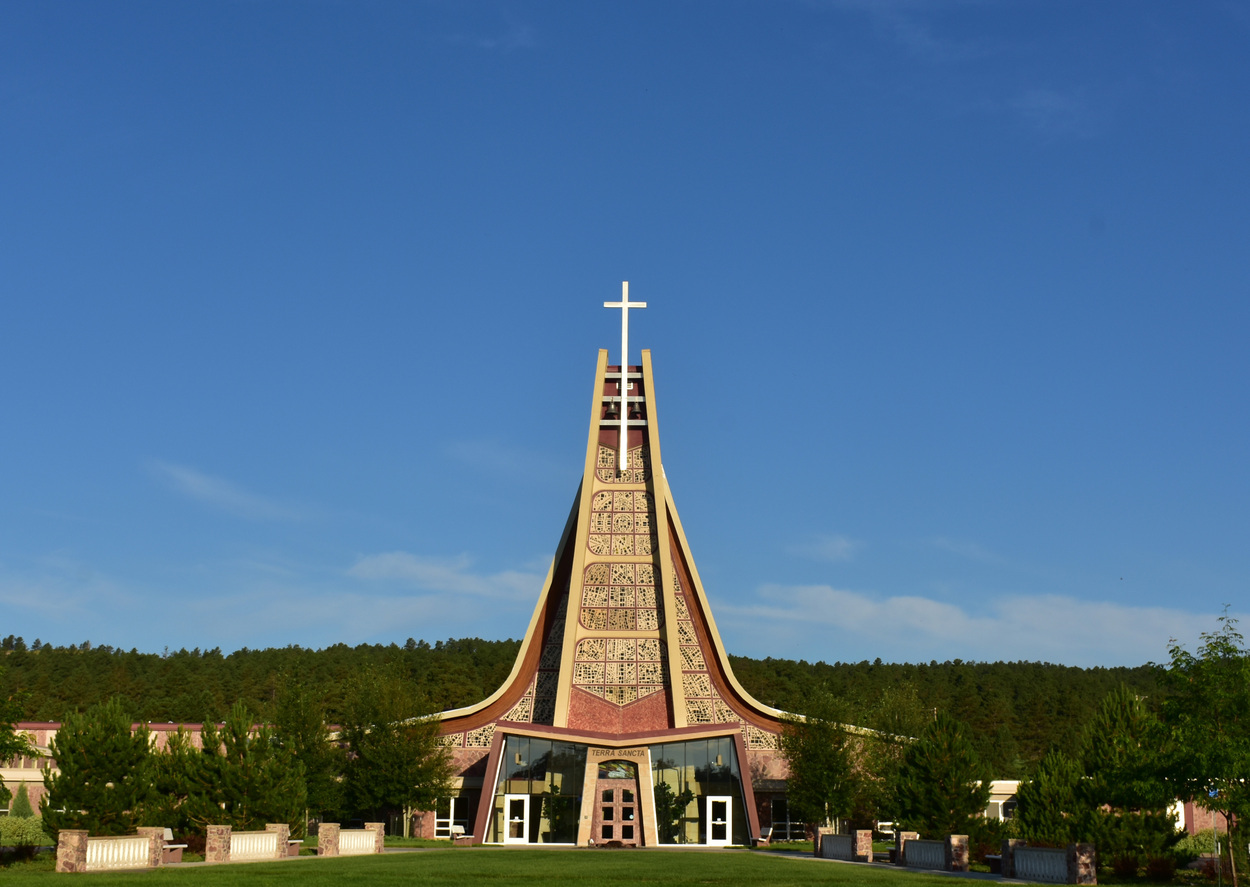

This concert was one of Elvis’ final shows before his death on August 16, 1977.
RAPID CITY RETREAT CENTERS TV
CBS recorded the show for a TV special, Elvis in Concert, released in October 1977. Before the concert, Mayor Art LaCroix presented Presley with a plaque featuring an engraving of Mount Rushmore, and a hand-beaded medallion made by Monique Brave. On June 21, 1977, Elvis Presley performed to a crowd of more than 10,000 people. This opening weekend highlighted some issues such as the balcony rail being too high, the side rails in the bleachers of the arena not being up to code, and the sound and lighting equipment not functioning as anticipated. Prior to the Elvis Presley concert, the Civic Center hosted tours of the building, two nights of the Shrine of Democracy barbershop show, and the graduation ceremonies for Central and Stevens high schools.

Tickets for $15, $12.50, and $10 were available on a first come, first serve basis by mail order only. In April 1977, Jack Beckman, civic center manager, announced that Elvis Presley would be performing the grand opening concert on June 21, 1977. Ultimately, the facility was named the Rushmore Plaza Civic Center.Ĭonstruction continued through 1976, seen here in photos from June 1976 and July 1976. The civic center board put forth a recommendation in December 1975 that the facility be named the Rushmore Civic Center Plaza. Finances for the parking facilities were a concern, and the city applied for an Economic Development Administration grant for $500,000 in December 1975. In May 1975, construction on the Civic Center began. Architects revealed design plans and a model in September 1974, and the design was approved by the board of directors that same month. Building of the Civic CenterĪ board of directors was appointed by Mayor Barnett in June 1972. The revised sales tax ordinance was voted on and approved by the residents of Rapid City on April 11, 1972. On all other retail sales, the site sales tax would go to 1.5 per cent during the pay-off period for construction of the facilities. On the other hand, hotel and motel rooms, restaurant tabs and liquor sales would be increased from one per cent to two per cent. The relief would come with the lifting of the present one per cent city sales tax on groceries and prescription drugs.

The proposal, approved unanimously by the city council, was a revised sales tax. In March 1972, a financing proposal was released to the public. The bill quickly passed in both the house and senate. The bill would “allow municipalities of 20,000 or more population to enter into long term leases for the acquisition of community facilities” ( Rapid City Journal, 1972). Senate Bill 228 was introduced to the South Dakota state legislature in 1972. Mayor Barnett indicated that private financing might help, but at the time it would be “unfair to solicit contributions without having some idea of the structure design to show prospective contributors” ( Rapid City Journal, 1972). Several routes were considered for financing the new Civic Center. Around this time, the design committee also issued their recommendations for the Civic Center. By December 1971, a proposed site for the new Civic Center was selected by the site selection subcommittee. In May 1971, a new committee named by Mayor Don Barnett with eight subcommittees began studying ways to finance the new civic center. Initially the Civic Center group recommended the arena be built at the fairgrounds. The Civic Center panel was named and visited facilities in nearby cities such as Bismarck to gather ideas for the civic center in Rapid City. In 1970, discussions regarding creating a civic center in Rapid City began. Public Discussions and the Creation of the One Cent Sales Tax


 0 kommentar(er)
0 kommentar(er)
